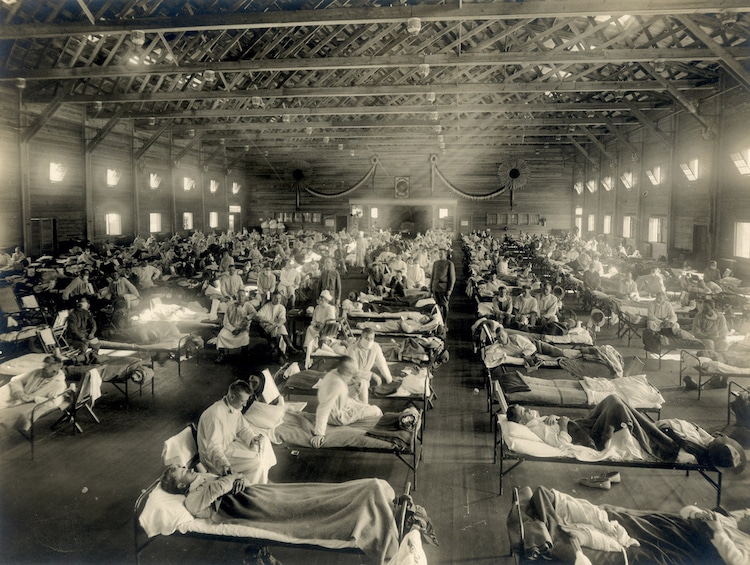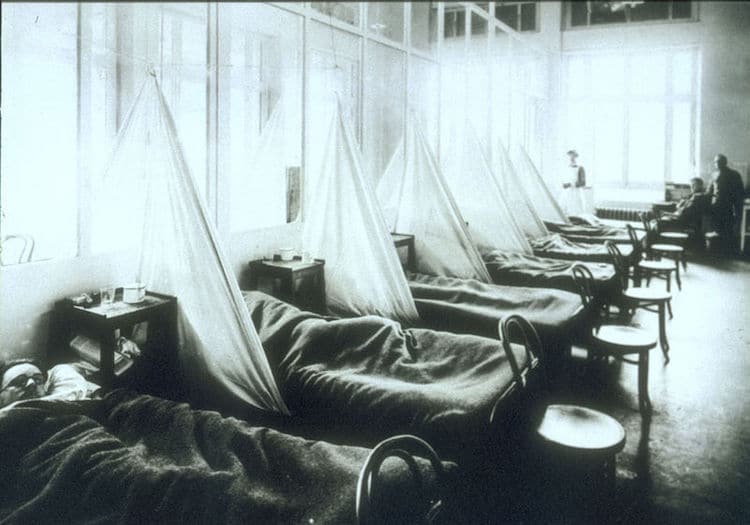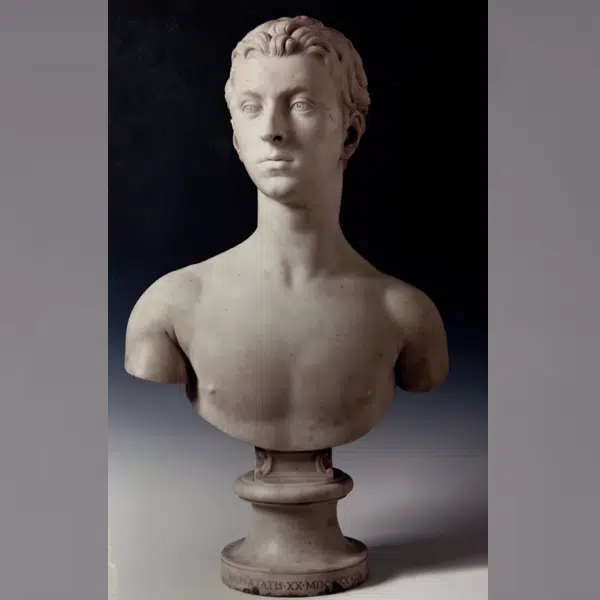
Emergency hospital in Kansas during the Spanish flu influenza pandemic. (Photo: Otis Historical Archives, National Museum of Health and Medicine / CC BY)
With the coronavirus (COVID-19) being labeled a pandemic, it might be useful to see what we can learn from a far deadlier pandemic—the Spanish flu. Starting in 1918 this virus infected about 27% of the world population and killed an estimated 50 to 100 million people. Also known as the 1918 influenza pandemic, it involved the H1N1 influenza virus which was also responsible for the 2009 swine flu. So what can we take away from the handling of the Spanish flu that can help us now?
Strikingly similar to today, many governments initially downplayed the severity of the virus. At the time, countries like Germany, the United States, France, and the UK didn't want to upset morale while in the throes of World War I. Spain, which was neutral, freely reported on the pandemic. This created the appearance that the Spanish were hit particularly hard—which was untrue—thus the name Spanish flu. One could draw parallels to today, where the U.S. government has been criticized for slow testing, while Italy has been particularly scrutinized owed to a large number of cases that were discovered early thanks to high testing rates.
In fact, as Italy puts its population of 60 million on lockdown, they are attempting to force social distancing in an effort to keep COVID-19 from spreading. Around the world, more governments are also emphasizing proper hygiene and canceling large gatherings in an effort to stop the momentum of the virus. This is particularly important when one looks at history. A 2007 study of the Spanish flu found that while the influenza itself was not any more deadly than previous strains, environmental factors made it more deadly. These included overcrowding in hospitals, poor hygiene, and malnourishment.
Travel is also another factor. In 1918, as World War I came to an end, troops returning home helped spread the virus globally. Today, our ability to travel freely is also causing COVID-19 to move from country to country at a rapid pace. In fact, restrictions on travel are some of the first steps that some governments have taken while the case of the Diamond Princess cruise shows how close quarters can cause the illness to spread quickly.

Victims of the Spanish flu at U.S. Army Camp Hospital in Aix-les-Bains, France. (Photo: Uncredited U.S. Army photographer / Public domain)
With festivals like SXSW and Coachella canceling or postponing their events and the NBA suspending their season, many are questioning whether or not these organizations are overreacting. Here's another case where the Spanish flu can teach us a valuable lesson. In 1918, ignoring warnings, the city of Philadelphia threw a parade to support the war effort. An estimated 200,000 filled the streets in a show of solidarity. Just three days later, cases of Spanish flu in Philadelphia shot up and hospitals were crammed with sick and dying patients.
In contrast, the city of St. Louis played things safe by preemptively closing schools, playgrounds, libraries, and churches. Even public gatherings with more than 20 people were prohibited. These social distancing tactics had a big effect on how the Spanish flu played out in the city, with research showing that St. Louis ended up with less than half the per-capita flu deaths of Philadelphia.
Of course, the Spanish flu was a much more violent illness than the coronavirus, where only 19% of those infected become severely ill. This is a significant hurdle to overcome, as those who may be carrying the virus without signs of illness could be harder to convince that some sacrifices are necessary. But if everyone can get on board, and quickly, the coronavirus pandemic will most certainly have less chance of survival.
“You can compare the outcomes in Hong Kong, Singapore, and Taiwan, which used such interventions aggressively from the very start, with what happened in Wuhan and what is happening now in Iran and Italy,” shares Richard Hatchett, a physician and head of the Coalition for Epidemic Preparedness Innovations in London. “There is no reason to expect the virus to behave differently in Europe and the US than it has in Asia.”
So if history teaches us anything, it's to stay calm—and stay safe—but not to underestimate the power of a virus. It just takes one sneeze or handshake to continue the chain of infection. By taking some simple, practical measures, everything will soon be back to normal.
Learn more about the deadly 1918 flu pandemic, also known as the Spanish flu.
Want to do your part? Here are 7 easy tips WHO recommends to avoid spreading the coronavirus.
Related Articles:
Photographer Immortalizes Shanghai’s Empty Streets During the Coronavirus
Illustrated U.S. Map From 1932 Shows the Medicinal Plants Native to Each State
New Law Allows Students in Oregon to Take Mental Health Days Off from School
Scientists Say Tribe in Bolivian Rainforest Have the “Healthiest Hearts in the World”






















































































